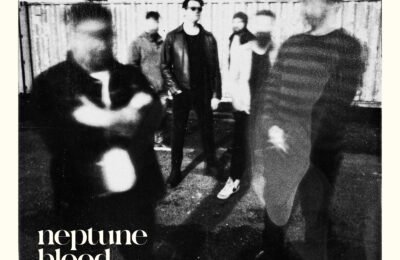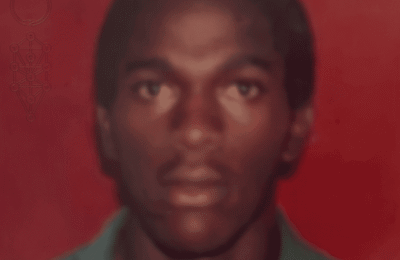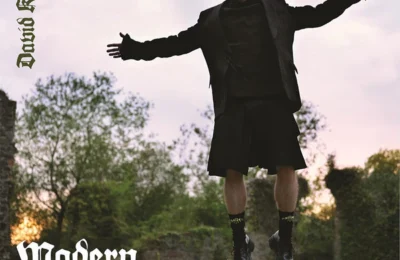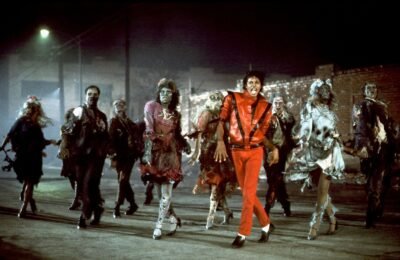There is a certain kind of music that does not shout to be heard but instead seeps into your life like a welcome draft of warm air through a door you didn’t know was open. Imelda Kehoe’s latest offering, The Colour Green, and the body of work it anchors, functions in exactly that way. Arresting in its intimacy and comforting in its tone, Kehoe’s music threads a line between jazz’s loose, emotive phrasing and the grounded sentimentality of country storytelling, all while steeped in the tonalities and uncertainties of Irish identity.
To understand Kehoe’s work, is to understand that this is not music built for crescendo or confrontation. There is no sudden punch to the gut, or soaring moment, that wrings the heart dry. Instead, it is the kind of album you find yourself returning to again and again, the way you might revisit a long-lost friend — not because of something sensational, but because of the enduring sense of place and personhood it offers.
Storytelling in Sound
“Risen People”, the album’s first single, showcases Kehoe’s nuanced grasp of narrative and space. There’s a deliberateness in how she constructs her lyrics: unfussy, poetic, and grounded in lived experience. She writes not for grand impact but for resonance. The story may be set in the past, but the musical storytelling is utterly contemporary.
The duality — of comfort and restlessness — courses through Kehoe’s voice. It’s here that the album reveals one of its most intriguing qualities. Her voice carries a soft grain, like linen worn in, which lends each track a sense of warmth and familiarity. But beneath the soothing timbre is something slightly haunted, the faintest tremor of detachment. She sings as someone who knows the landscape intimately but watches it from the hedgerows, neither fully inside nor completely apart. There is an emotional ambiguity to her delivery — not aloof, but reserved, a watcher, watching.

Heritage Without Nostalgia
It’s tempting to call her voice maternal, in the way that it soothes and centers — but that would undersell its complexity. In places, Kehoe’s delivery takes on a sharper edge, evoking smoky jazz bars and the bluesy undercurrents of early Norah Jones. Elsewhere, you hear echoes of folk traditions, of lullabies handed down and reframed. This play between warmth and distance, heritage and innovation, runs like a seam through the entire album.
The music is undeniably shaped by the physical and emotional landscapes of Ireland: the rain-streaked windows, the hedgerow-lined roads, the uneasy legacies of rebellion and reconciliation. Yet, what makes Kehoe’s perspective singular, is how she toggles between insider and outsider, often within the same song. She invokes Irishness not as a flag to be waved, but as a condition to be felt — a weight, a gift, a burden. This is most evident on “The Colour Green,” where historical echoes are subtly layered beneath present-day observations. There’s no didactic nationalism here, just a lived, often ambivalent understanding of what it means to come from a place that has always been more than just geography.
A Quiet Kind of Cinematic
Musically, the album wears its influences lightly, but with pride. Kehoe leans into jazz and country, not to mimic either tradition but to borrow their emotional cadences. The jazz influence gives her phrasing a looseness, a sense of breath and space, while the country undertones anchor the melodies in something rooted and familiar. Acoustic guitars mingle with brushed drums and gentle piano lines. There is restraint in the arrangements, a conscious decision not to oversaturate. The result is an atmosphere that feels both personal and cinematic — like the score to a quiet life lived well.

Emotional Invitation
Perhaps the most striking thing about The Colour Green is its emotional temperament. It rarely climbs into the register of deep poignancy or heartbreak. There are no moments that demand tissues or deliver gut-punches. And yet, the album’s emotional impact lies in precisely this refusal. Kehoe does not manipulate the listener into catharsis. Instead, she invites — gently, persistently — into a shared space. You’re not devastated by the songs, but you’re not untouched either. The feelings they stir are slow-burning: recognition, solace, a sense of being quietly understood.
This is not music to be consumed in passing. It asks for your attention, not urgently but patiently. And the more you give it, the more it offers in return. The album unfolds not like a novel, with clear peaks and arcs, but like a photo album— each track a snapshot, a memory, a soulful window. You come back not because you need to know what happens next, but because this is your place, your people.
In that way, Kehoe’s music performs a rare kind of magic. It creates a homely feeling, not through nostalgia or sentimentality, but through presence. There’s an invitational quality to these songs. They don’t clamor to be anthems, they don’t chase trends or dramatize the self. They simply are — and in being so, they offer something quietly radical in today’s musical landscape.
Music That Holds You
If there is a limitation to be found, it is only this: the album never quite hits an emotional apex. For listeners craving catharsis, the lack of a knockout emotional moment may leave something wanting. But that, perhaps, is missing the point. Kehoe isn’t interested in hitting you over the head with feeling. She’s more interested in the slow accumulation of trust, in the quiet hum of recognition and empathy. You don’t leave the album overwhelmed — you leave it held.
The Colour Green may not strive to be definitive or dramatic. It doesn’t pretend to change the world. But what it offers — a sense of emotional invitation, a blend of cultural rootedness and individual voice, a musical space both tender and restrained — is its own kind of achievement. This is music that becomes a companion, a steady voice in the din, a long-lost friend who never really left.
And in a world of noise and spectacle, that might be the most powerful thing of all.

















